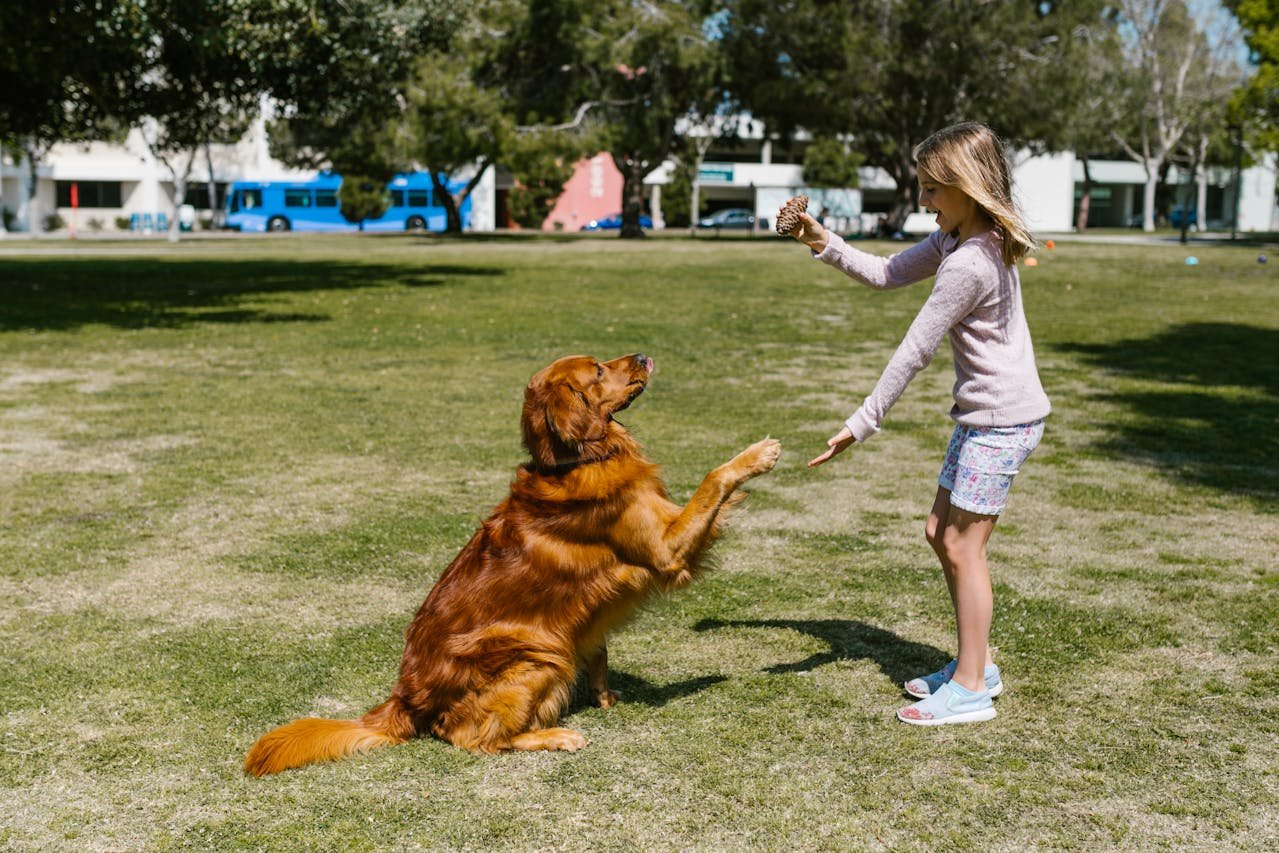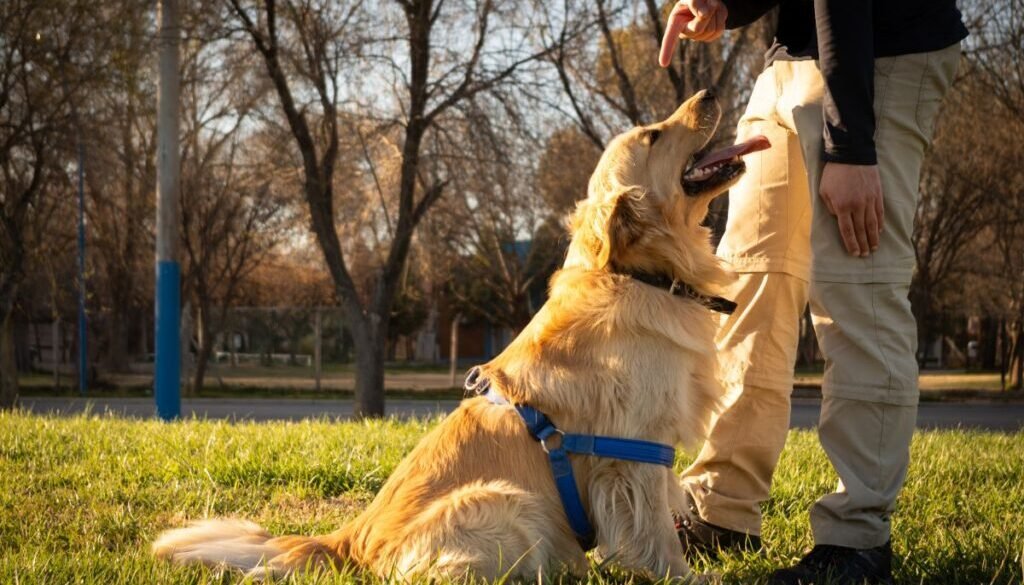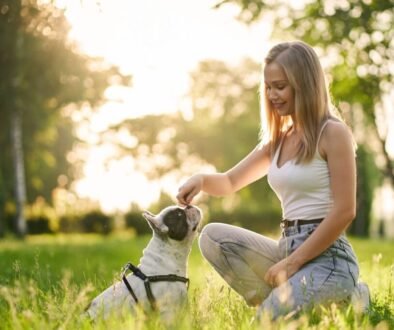How to Train a Golden Retriever: A Friendly Guide to Success
Why Training Your Golden Retriever is a Game-Changer
“Is training a golden retriever as easy as everyone says?” You’ve probably heard that golden retrievers are one of the smartest and friendliest dog breeds—but training any dog takes effort, patience, and the right strategy. Whether you’re figuring out how to train a golden retriever puppy or helping an older dog master new skills, the key to a harmonious life with your golden retriever lies in effective training.
In this guide, we’ll tackle the most effective ways to train your golden retriever, share insider tips, and help you navigate common challenges—all while strengthening the bond with your furry friend. Ready to turn your golden retriever into a well-behaved superstar? Let’s dive in.
Understanding Your Golden Retriever’s Personality
Why Personality Matters
Golden retrievers are renowned for their friendly, outgoing, and intelligent nature. According to the American Kennel Club (AKC), they rank 4th among the smartest dog breeds. However, their exuberance and curiosity can lead to trouble if not properly channeled.
Key Traits to Keep in Mind:
- Eager to please: They thrive on positive feedback and love making their owners happy.
- Highly energetic: Golden retrievers require both mental and physical stimulation to stay happy and calm.
- Social butterflies: These dogs are naturally friendly and may need guidance on proper behavior around new people or pets.
Understanding these traits will help you tailor your training approach, ensuring it aligns with your dog’s unique personality.
Basic Training Essentials

Establishing Trust
The foundation of any successful training program is trust. Spend quality time with your golden retriever through play, walks, and gentle interactions to build a strong bond.
- Use gentle tones to communicate. Golden retrievers respond better to kindness than harsh commands.
- Spend at least 30 minutes daily focused solely on bonding activities.
The Importance of Consistency
Consistency is your secret weapon. Whether it’s commands, routines, or rewards, sticking to a predictable system makes it easier for your golden retriever to understand what you expect.
- Always use the same commands for specific actions (e.g., “sit,” “stay”).
- Keep training sessions short but regular—10 to 15 minutes, 2-3 times a day.
Training Techniques That Work Best for Golden Retrievers

Positive Reinforcement
Golden retrievers respond exceptionally well to positive reinforcement, which involves rewarding good behavior to encourage its repetition.
How to Use Positive Reinforcement:
- Offer treats, verbal praise, or a favorite toy immediately after your dog performs a desired action.
- Use a clicker for precise training. Click when your dog does the right thing, then reward them.
Pro Tip: Avoid over-relying on treats. Mix in verbal praise and affection to keep your dog motivated without becoming food-dependent.
Case Study: Training Max, the Energetic Golden Retriever
“Max, a six-month-old golden retriever, was a bundle of energy when his owner, Sarah, brought him home. He loved jumping on guests, pulling on the leash during walks, and occasionally ‘helping’ himself to shoes for chewing practice. Sarah, determined to channel Max’s exuberance into good behavior, decided to try positive reinforcement training.
Sarah started by teaching Max basic commands like “sit” and “stay” using his favorite treat—small pieces of cooked chicken. By consistently rewarding him the moment he followed a command, Max quickly learned that listening earned him yummy rewards. Within two weeks, Max was sitting on cue every time Sarah asked.
Leash pulling was their next challenge. Sarah used a no-pull harness and followed the ‘stop-and-go’ technique: every time Max pulled, Sarah would stop walking and only move forward when the leash slackened. Though Max was frustrated at first, he soon realized that staying close to Sarah got him more walk time. After a few weeks of practice, their walks became much more enjoyable.
Socialization was another priority. Sarah introduced Max to new environments and people by taking him to dog-friendly coffee shops and parks. She rewarded him for staying calm when meeting strangers and other dogs. By age one, Max had transformed into a well-behaved, happy golden retriever who loved showing off his tricks to guests.
Max’s story shows that with patience, consistency, and positive reinforcement, even the most energetic golden retrievers can thrive.”
Socialization Strategies
Golden retrievers are naturally sociable but require proper socialization to ensure they’re well-behaved in different environments.
- Introduce your dog to new people, pets, and environments as early as possible.
- Use controlled situations to expose them to common scenarios, like visits to the vet or a busy park.
- Reward calm, appropriate behavior to reinforce good habits.

Overcoming Common Golden Retriever Training Problems
Training isn’t always smooth sailing. Here are some common hurdles and solutions:
1. Pulling on the Leash
Golden retrievers are strong and may pull during walks.
Solution:
- Use a no-pull harness.
- Stop walking every time your dog pulls, then resume only when the leash is slack.
2. Jumping on People
Their excitement can lead to jumping, which isn’t always welcomed.
Solution:
- Teach the “off” command. Reward your dog when they sit calmly instead of jumping.
3. Chewing
Puppies, especially, love to chew anything in sight.
Solution:
- Provide plenty of chew toys.
- Redirect unwanted chewing to appropriate items and praise your dog for making the switch.
By overcoming common golden retriever training problems, you’ll not only improve your dog’s behavior but also make training a more enjoyable experience for both of you.
Advanced Training Tips for a Thriving Golden Retriever

Once you’ve mastered the basics, you can teach your golden retriever more advanced skills:
- Off-leash training: Practice in a fenced area and gradually increase the level of distraction.
- Service dog tasks: Golden retrievers excel at fetching items, opening doors, or even assisting individuals with disabilities.
- Fun tricks: Teach your dog to roll over, play dead, or even put away their toys.
Pro Tip: Keep advanced training fun and rewarding to prevent boredom or frustration.
Conclusion and Key Takeaways
Training your golden retriever doesn’t have to be a daunting task. By understanding their unique personality, using positive reinforcement, and staying consistent, you can guide your furry friend to become a well-mannered, happy companion.
Remember, the journey of training is also about building a lifelong bond. Celebrate small victories and enjoy the process—it’s worth every moment.
FAQs
- How long does it take to train a golden retriever?
It depends on the dog and the training goals, but most goldens pick up basic commands within a few weeks of consistent practice. Advanced training can take several months.
- Can older golden retrievers be trained?
Absolutely! While puppies may learn faster, older dogs can still learn with patience and consistency.
- What’s the best age to start training a golden retriever?
Start as early as 8 weeks old. Early socialization and basic commands lay a strong foundation for future training.
- What if my golden retriever isn’t motivated by treats?
Try using toys, verbal praise, or extra playtime as rewards instead.
For more tips and resources, visit American Kennel Club or consult a local dog trainer.



